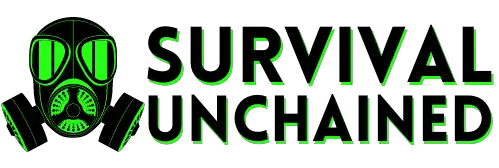We’re an affiliate. We may earn a commission on qualifying purchases through the links on this page. Learn more by reading our disclaimer.
What Are The 5 C’s Of Survival? The 5 C’s of survival is a term that was made popular during the Vietnam War. The 5 C’s are five tools or components that will be needed for any situation in which you may find yourself stuck. These 5 C’s are: cutting tools, combustible devices, cover, containers, and cordage.
This is a kit that is needed at all times as it can help you survive anything from natural disasters like earthquakes or tornadoes to man-made events like terrorism, power outages, and more.
Without the 5 c’s of survival, you could find yourself with no means of making a fire, building a shelter, or collecting freshwater. In this blog post, you will learn all about the 5 c’s of survival and why they are important.
What are the 5 C’s of Survival?
5 C’s of Survival:
- Cutting tools
- Combustible devices
- Cover
- Containers
- Cordage
Cutting Tools
A survival knife should be your first choice of a 5 C item as it can be used for a multitude of purposes from building shelters to hacking through vegetation. A 5 C kit should include a 5″ fixed blade knife with a full tang, something that is durable and can take some beating.
I also recommend having multiple cutting tools so that you are covered no matter what comes up in your emergency situation. I would include the fixed blade knife, a pocket knife, a multi-tool, a hatchet, and maybe even a foldable saw. This gives you a tool for multiple occasions.
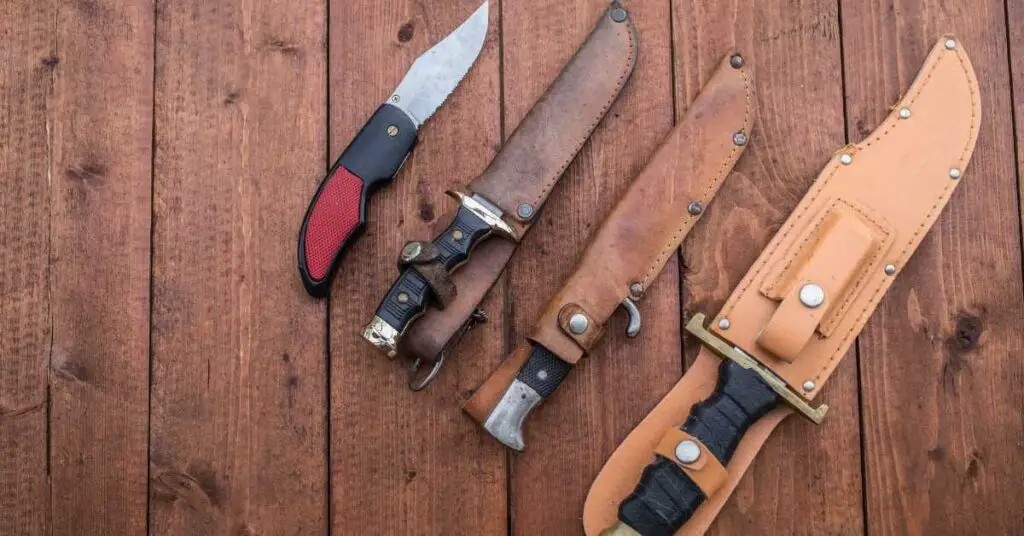
How to Choose Your Cutting Tools
When preparing for a survival situation, choosing the right cutting tools is essential.
There are many factors to consider when selecting your tools, such as the material that the tool is made from, the sharpness of the blade, and the weight and size of the tool.
Ultimately, you want to choose a set of tools that will allow you to comfortably perform any necessary tasks without weighing you down or impeding your movements unnecessarily.
A good starting point is to think about which materials you might need to cut in a survival situation.
Some common examples include rope and wire for constructing shelter and setting traps, wood for creating fire and building structures, and meat and animal hide for food and clothing.
You will also want to consider whether there will be times when you may need multiple types of cuts at once: for example, if you need to cut wood while making cordage with some of it.
In these cases, it is best to have several different tools with varying shapes and cutting abilities at hand.
Ultimately, your goal should be to select cutting tools that are lightweight yet strong enough to achieve high-quality results in difficult conditions.
Choosing the right ones can mean the difference between life and death in a survival situation – so don’t take this decision lightly!
Our Top 5 Types of Cutting Tools:
On this list of our top 5 types of cutting tools, there is something for everyone and for every situation. It is important to be prepared and put together a kit that includes these will get you ready for anything.
Fixed blade knife
A fixed blade knife with a full tang is the best choice for survival situations.
First, the full tang provides strength and stability, so the knife can handle tough tasks.
Second, the fixed blade is less likely to break than a folding knife.
Third, a full-tang knife is easier to sharpen in the field. Fourth, a fixed blade with a full tang provides better grip and control.
Finally, a full-tang knife is less likely to get lost, because it can’t be misplaced like a small folding knife. In short, a fixed blade with a full tang is the best choice for survival situations.
It’s strong, stable, easy to sharpen, and less likely to be lost. So if you find yourself in a survival situation, make sure you have a knife with a full tang.
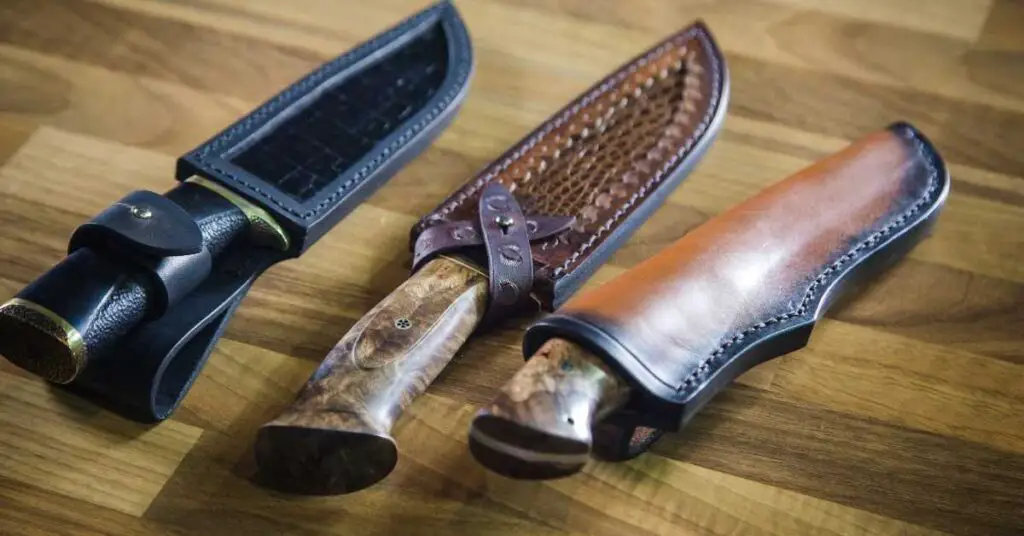
Pocket knife
There are many reasons why a pocket knife is such a good tool for survival situations. First of all, it’s compact and lightweight, which makes it easy to transport and keep on your person at all times.
This means that you always have access to the basic tools you need in an emergency situation.
A pocket knife can be a reliable tool that can be used to perform a wide range of functions, from cutting rope to slicing food to opening a box. Plus, it can be used for self-defense in an emergency situation where you are facing danger.
There are many different styles of pocket knives available, so it’s important to do some research before choosing one to ensure that you select something that will meet your needs. A good pocket knife should also have a sharp blade that is easy to resharpen in the field.
Multi-tool
A multi-tool is another essential tool for survival situations because it provides access to multiple functions with just one item. For example, most multi-tools include pliers and wire cutters as well as other tools like screwdrivers and knives.
This means that you don’t need to carry around several separate items to accomplish the same task.
A multi-tool can also include saws, scissors, and other tools that allow you to get a lot of work done even in difficult situations. If you have one of these with you in a survival situation, it can be invaluable in helping you to deal with many common issues that might arise.
However, choosing a multi-tool is not always simple, because there are so many different styles on the market today. It’s important to do your research before deciding which one will be most useful for your needs so that you don’t end up wasting money on something that doesn’t suit your purposes.
A good multi-tool should be easy to use and have durable components that stand up well in demanding situations.
Hatchet
A hatchet is a versatile tool that can be useful in a wide range of survival situations. In a pinch, it can be used as a weapon for self-defense or to hunt small game.
It can also be used to chop wood for a fire, build shelter, or clear a path through dense vegetation.
Even the handle can be put to use, serving as a makeshift rod for fishing or as a support for an improvised splint. In short, a hatchet is a perfect tool for anyone who wants to be prepared for anything.
So next time you’re heading into the wilderness, make sure you pack a hatchet. It just might save your life.
Foldable saw
Any good survivalist knows that a trusty saw is an essential part of any emergency kit. But in an SHTF situation, you can’t always count on having two hands free to use a traditional saw.
That’s where a foldable saw comes in handy. A foldable saw can be easily tucked into a pocket or pack and deployed with one hand if necessary.
Additionally, the compact size of a foldable saw makes it ideal for cutting through brush and debris, while the sharp teeth make short work of tree branches and small logs.
So if you’re looking to be prepared for anything, make sure you add a foldable saw to your list of must-have survival gear.
Combustible Devices
Combustible devices are very important when it comes to surviving a world of different situations. Two common examples are fuel tablets and fire starters or magnesium strikers if you prefer.
Fuel tablets are a great 5 C item because they can be added to your 5 C survival kit without taking up much room, and you will have the ability to create fire almost anywhere in any situation.
In addition to the fuel tablets, I would also include a fire starter, a basic cigarette lighter, and some waterproof matches that would work great.
The idea is that you have multiple ways to start a fire either cook food, sterilize items, purify water, or just keep warm during the night. If you put all of your trust into one particular item and it fails, you are up a creek without a paddle.
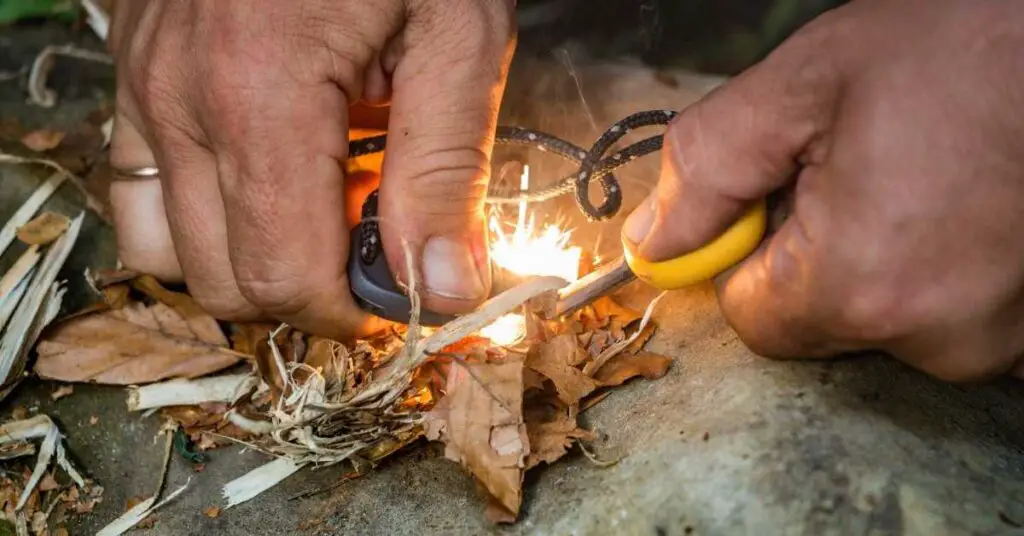
Our Top 5 Combustible Devices
On this list of our top 5 combustible devices, there is something for every situation. It is important to be prepared and put together a kit that includes everything you will need so you will be ready for anything.
Lighter
A lighter is an important tool to have in a survival situation. It can be used to start a fire, which can help you stay warm, cook food, and signal for help. The flame can also be used to sterilize water or clean a wound.
The light from the flame can also be used to illuminate your way in the dark. In addition, the heat from the flame can be used to melt snow or ice.
A good lighter should be easy to operate, even with cold or wet hands. It should also be durable enough to withstand being dropped or exposed to the elements.
While there are many different types of lighters on the market, some of the best are made by well-known brands like Zippo and Bic.
There are many ways that a lighter can help you survive in a difficult situation.
Waterproof Matches
If you’ve ever found yourself in a survival situation, then you know that having a reliable way to start a fire can mean the difference between life and death.
And while there are many ways to start a fire, one of the simplest and most effective is with a match. But not just any match will do – in order to ensure that your fire will stay lit in even the most adverse conditions, you need a waterproof match.
Waterproof matches are designed to resist moisture, making them ideal for use in wet weather or around water sources. They also tend to be more durable than regular matches, meaning that they’re less likely to break when struck.
So if you’re looking for a fire-starting tool that you can rely on in any situation, be sure to pick up a pack of waterproof matches.
Fuel Tablets
A fuel tablet is a small, pressed cake of flammable material used to start fires. They are typically made of sawdust or paper impregnated with a combustible solvent such as wax or paraffin.
Fuel tablets are an essential item for any survival kit, as they can be used to light stoves and campfires or to signal for help. In addition, fuel tablets are easy to carry and store, making them ideal for use in emergency situations.
While matches and lighters are often preferable for starting fires, fuel tablets can be a reliable backup option when these items are not available.
For anyone who spends time outdoors, a fuel tablet can be a valuable addition to their survival kit.
Fire Starter
A fire starter is a very valuable tool to have in any survival situation. A fire starter can be used to create fire to keep you warm, cook food, or signal for help.
There are many different types of fire starters, but one of the most effective is a magnesium fire starter. Magnesium is a highly combustible element, and when struck with a metal blade, it produces a shower of sparks.
This makes it very easy to start a fire, even in wet or windy conditions. In addition, magnesium fire starters are small and light enough to carry in your pocket, making them ideal for survival situations.
So if you find yourself in a tough spot, don’t forget to bring along a magnesium fire starter. It could be the difference between life and death.
Cover
When building a 5 C survival kit always remember that if enemies see you they may want to rob you, capture, or even kill you. Staying concealed is a must during an SHTF situation to protect you and your supplies.
There are many different ways provide cover or to build cover with a few simple supplies. One of the easiest ways to give yourself some cover is to just pack a simple tarp in your survival kit.
You can use this tarp to make a shelter that will provide cover from the elements or you can use a tarp to hide your camp or make it less obvious. A tarp can be an effective way to conceal what you are doing in your camp or just provide some shade on a hot day.
Our 2 Favorite Easy To Pack Cover Options
Tent
A tent is a perfect shelter for any survival situation. Here’s why: tents are lightweight and portable, so you can easily carry one with you when you’re bugging out or out hunting for food.
They’re also quick and easy to set up, so you can get out of the elements quickly if the weather takes a turn for the worse. Most importantly, tents provide a barrier between you and the outside world, protecting you from the elements and giving you a place to rest and regroup.
Of course, a tent is also useful for more mundane purposes, such as providing a comfortable place to sleep or storing supplies. But in a survival situation, a tent can be the difference between life and death. So if you find yourself in an uncertain situation, don’t forget to pack your tent. It just might save your life.
Tarp
A tarp is an essential item in any survival situation. It can be used for shelter, to collect water, or even as a makeshift boat. But what makes a tarp such a versatile tool? First of all, tarps are made from durable materials that can withstand harsh weather conditions. They are also lightweight and easy to carry, making them ideal for use in emergency situations.
Containers
Containers are 5 C tools that could be used for anything from boiling water to collecting water in extremely dry climates, or possibly even cooking with your 5 C survival kit if you have the ability to make a fire. 5 c’s of survival kits always include metal tins as they can withstand heat and large amounts of water and are nearly indestructible. If
You choose to use a different type of container, be sure it is food grade and can withstand being in the sun or heat as well as being submerged in water.
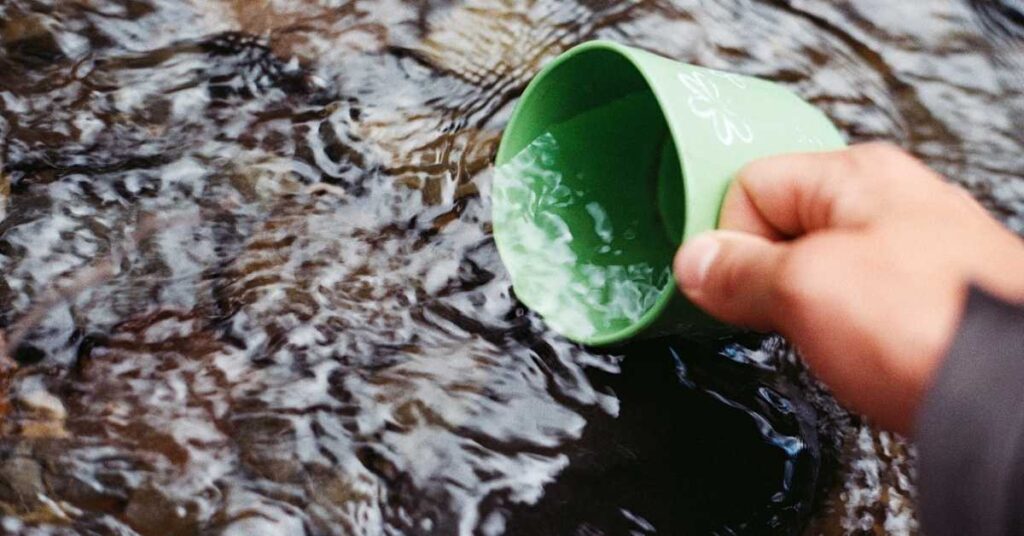
Canteen/Water Bottle
A canteen or water bottle is a must-have in any survival situation. Not only do you need water to stay hydrated, but you also need water to cook food, cleans wounds, and make a fire. A canteen or water bottle allows you to carry some water with you, so you’re never without this vital resource.
There are many different types of canteens and water bottles on the market, so choose one that best suits your needs. For example, if you’re looking for a lightweight option, consider a water bottle made from aluminum or titanium. If you’re looking for something more durable, consider a canteen made from stainless steel.
No matter what type of canteen or water bottle you choose, be sure to pack it in your survival kit.
Small pot
You should also include a small cooking pot in your survival kit as you could possibly need a pot to boil water in to purify it so that it will be safe to drink.
This is one of the most important uses for a pot, but you could also use it to cook food if you have the ability to make a fire. If you choose to include a pot in your survival kit, be sure it is made from durable materials such as stainless steel or aluminum.
Cordage
The fifth item is cordage and this refers to having rope or paracord with you at all times. Cordage can be used for building shelters and traps, snaring game animals, and hauling gear.
A good survival kit often includes paracord which is a strong multipurpose tool that can be used to build shelter, make a tourniquet, unraveled to use as sewing thread or fishing line, and so many other uses.
Even though paracord is a true multipurpose form of cordage, you should not limit yourself to just having one type. You should also consider having another type of rope, some fishing line, and maybe even a strap or bungee cords.
Cordage is very important and you should consider carrying a couple of different types so that you can be prepared in all situations.
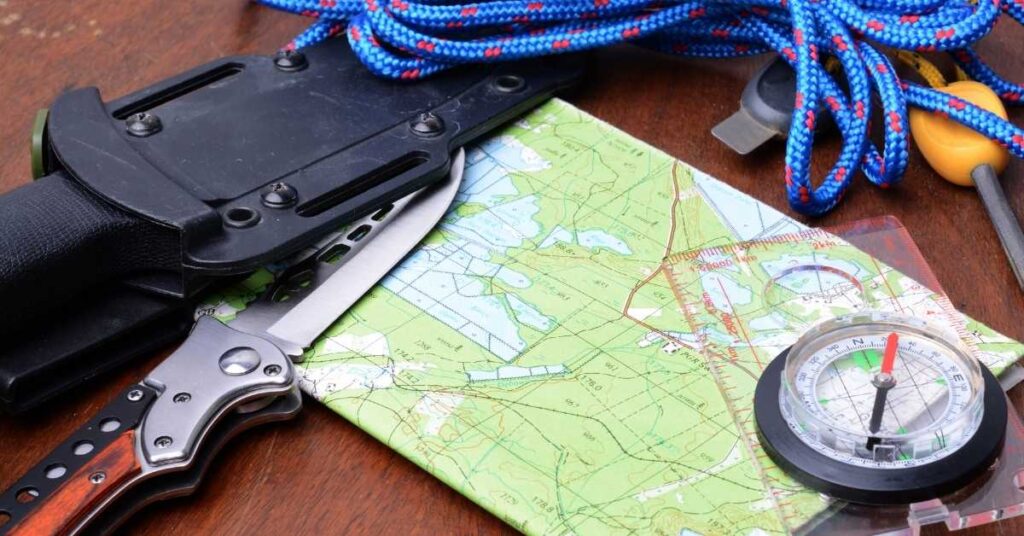
How to Put Together a 5 C Survival Kit
The first step to putting together a good 5 C survival is finding the right bag to carry all of your gear. A good bag should be large enough to fit all of your gear, but not so large that it is cumbersome to carry. It should also be made from durable materials such as nylon or canvas.
Once you have a good bag, the next step is to choose the right tools. Once you have your bag, you should put all of your 5 C items into your bag and then access what spare space you have for additional gear that could come in handy.
Here are some suggestions for bonus gear:
- Extra prescription medicine (if you are on meds)
- flashlight
- solar charger
- compass
- protein bars
- life straw
- first aid kit
- spare clothes
- extra batteries
- map
- ammo
- thermal blanket
- whistle
FAQs
Here are some of the commonly asked questions about the 5 c’s of survival:
What Is the Best Type of Bag to Use for A Survival Kit?
There’s no one-size-fits-all answer to this question, as the best type of bag for a survival kit will vary depending on your needs and preferences. However, some general considerations include choosing a bag that is sturdy and can withstand tough conditions, is water-resistant, has enough room to store all of your necessary items, and is comfortable to wear.
One option for a versatile and durable survival kit bag is an army surplus backpack. These backpacks are built to last and can handle a lot of wear and tear. Plus, they usually have plenty of room to store supplies.
What Are Some Essential Items to Include in A Survival Kit?
There are a variety of items that you may want to consider including in your survival kit. Of course, the specific items you choose will depend on your needs and the environment in which you will be operating. However, some basic essentials include food, water, shelter, fire-starting materials, and first-aid supplies.
It is also important to remember that your survival kit should be tailored to your individual needs. For example, if you are traveling in a remote area where you are likely to encounter harsh weather conditions, then it is important to include items like a warm coat and boots in your kit.
How Can I Make Sure My Survival Kit Is Complete?
The best way to make sure your survival kit is complete is to customize it to your specific needs and environment. There are a few basic things that every survival kit should have, but beyond that, you’ll need to tailor your kit to your particular situation.
First, let’s talk about the basics. Every survival kit should have some form of shelter, a way to start a fire, a way to purify water, food, and first-aid supplies. Make sure you have enough of each to last for at least 72 hours. Next, consider adding items that will help you stay warm, dry, and safe, such as a fire starter and insect repellent.
Beyond that, though, you’ll need to take into account your specific situation. Are you in an urban environment or a rural one? What kind of climate are you in? What type of terrain are you expecting to encounter?
These are just a few of the questions you’ll need to answer in order to make sure your survival kit is complete. The best way to do this is to sit down and think about all of the potential scenarios you could encounter and then make sure you have the supplies you need to survive them.
Is There Anything Else I Should Add to My Survival Kit?
You should consider all of the possible situations you could face in an SHTF scenario based on where you live. Make a list of those different situations, and check your list against what you already have in your survival kit.
Are you prepared for each situation? If you are, then move on to the next scenario. If you are not, then work to get prepped for that one before moving on to the next one.
This will help you decide whether or not there is anything that you should add to your survival kit
In Conclusion
Conclusion paragraph: While the 5 C’s of survival may seem like common sense, they are often overlooked in the heat of the moment. By being aware of these key concepts and practicing them when necessary, you can increase your chances of surviving any dangerous situation.
